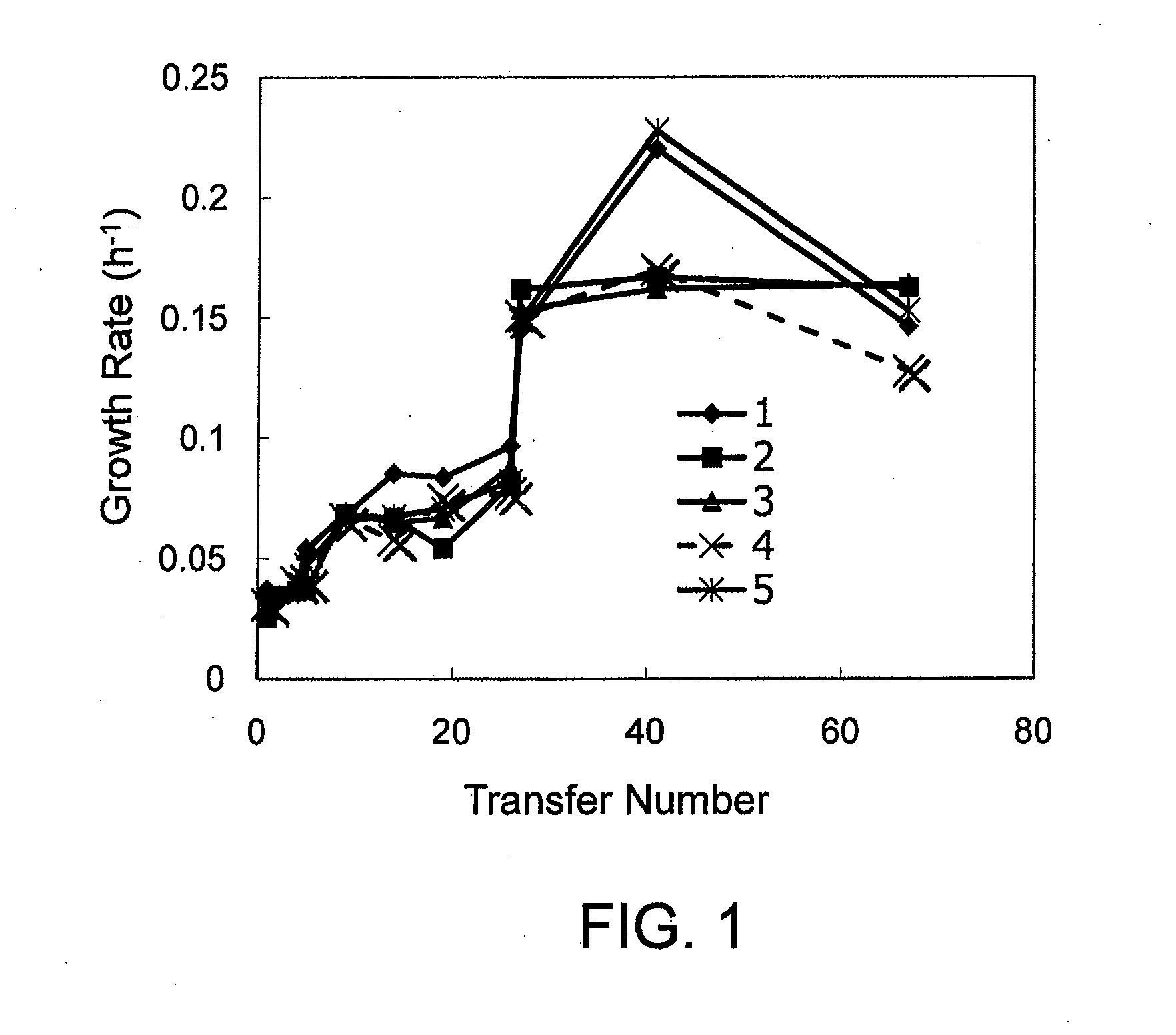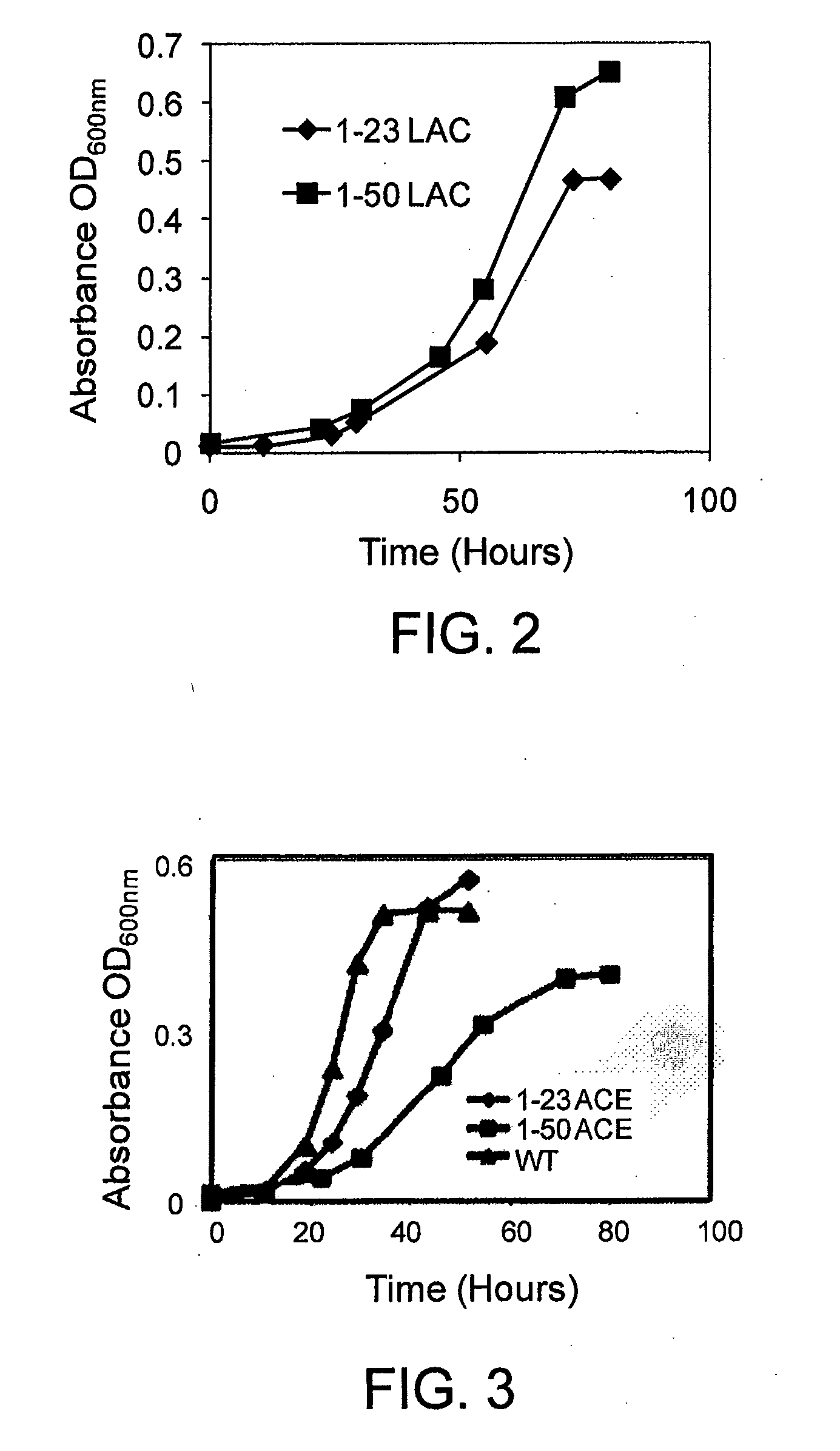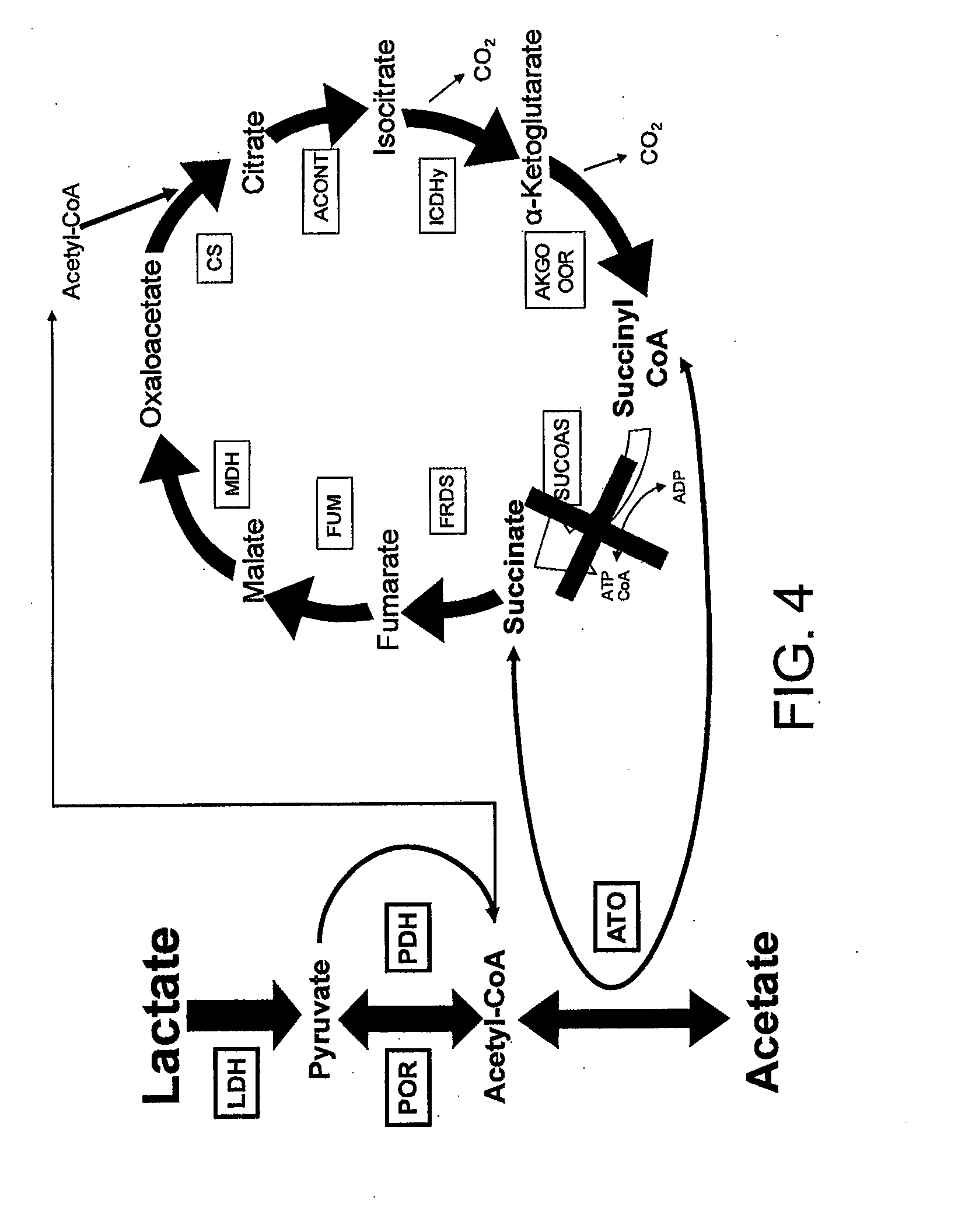Geobacter Strains That Use Alternate Organic Compounds, Methods of Making, and Methods of Use Thereof
a technology of alternate organic compounds and geobacter strains, applied in the field of electricigenic microorganisms, can solve the problems that the power output remains only small, and achieve the effects of improving the in situ bioremediation of the contaminated site, effective utilization of lactate, and improving the in situ bioremediation
- Summary
- Abstract
- Description
- Claims
- Application Information
AI Technical Summary
Benefits of technology
Problems solved by technology
Method used
Image
Examples
example 1
Generation of Geobacter Strains Capable of Efficient Utilization of Lactate
[0060]The ancestral (or wild type) strain of G. sulfurreducens is unable to utilize energy / electron-dense compounds, such as pyruvate, various sugars and glycerol (Caccavo, et al. 1994). However, genes required for glycolysis and glycerol oxidation as well as those required to convert pyruvate to acetyl-CoA are present in the Geobacter sulfurreducens genome (Methe, Nelson et al. 2003). Under normal laboratory conditions G. sulfurreducens is grown with acetate as an electron donor and fumarate as an electron acceptor. The average doubling time of a culture grown on acetate-fumarate media is about five hours. It was previously reported that G. sulfurreducens could not grow on media containing lactate as an electron donor. We have found, however, the strain does grow, though very slowly. The doubling time of the wild type strain PCA grown on lactate-fumarate media is greater or equal to 24 hours.
[0061]An adaptat...
example 2
Phenotypic Characterization of Lactate Adapted Strains
[0064]Isolate 1-23 and isolate 1-50 were then compared to the ancestral strain for growth characteristics on lactate and acetate. Isolate 1-50, which had been grown on lactate for 330 generations, had a doubling time of 5 hours on NB lactate medium and 9.8 hours on NB acetate medium. An evolutionary tradeoff seemed to occur due to the prolonged exposure on lactate of isolate 1-50, resulting in increased fitness on lactate and some loss of fitness on acetate. Isolate 1-23, which had been grown on lactate for 150 generations, had increased fitness on NB lactate medium with a doubling time of 6 hours, and only a slight decrease in fitness on NB acetate medium with a doubling time of 6 hours.
[0065]FIG. 2 depicts growth curves over time of the lactate-adapted isolate 1-23 strain (filed diamonds) and the isolate 1-50 strain (ZMS-153, filled squares) grown in NB medium containing 10 mM lactate as an electron donor and 40 mM fumarate as ...
example 3
Genomic Characterization of Lactate Adapted Strains
[0068]Sequencing of the 3.5 MB genome of each of isolate 1-23, isolate 1-50 (ZMS-153), and strains ZMS-253, ZMS-353 and ZMS-453, described below, was carried out to identify changes that had occurred on the genome level. The resulting sequences were compared to the known sequence of the ancestral strain, as well as compared to control sequencing carried out in parallel on the ancestral strain.
[0069]A mutation located in the open reading frame of GSU0514 (SNP 548250 G-A (E-K)), resulting in a glutamate to lysine change in the protein sequence was identified in all the strains that had been adapted to lactate, i.e., 1-23, ZMS-153, ZMS-253, ZMS-353 and ZMS-453. All strains showed a single nucleotide pair (SNP) mutation of G to A at position 548250 in GSU0514 that results in an E to K change in the gene product, a repressor of succinyl-CoA synthetase.
[0070]GSU0514 is a transcriptional repressor. DNA binding assays indicate that the repr...
PUM
| Property | Measurement | Unit |
|---|---|---|
| doubling time | aaaaa | aaaaa |
| doubling time | aaaaa | aaaaa |
| volume | aaaaa | aaaaa |
Abstract
Description
Claims
Application Information
 Login to View More
Login to View More - R&D
- Intellectual Property
- Life Sciences
- Materials
- Tech Scout
- Unparalleled Data Quality
- Higher Quality Content
- 60% Fewer Hallucinations
Browse by: Latest US Patents, China's latest patents, Technical Efficacy Thesaurus, Application Domain, Technology Topic, Popular Technical Reports.
© 2025 PatSnap. All rights reserved.Legal|Privacy policy|Modern Slavery Act Transparency Statement|Sitemap|About US| Contact US: help@patsnap.com



